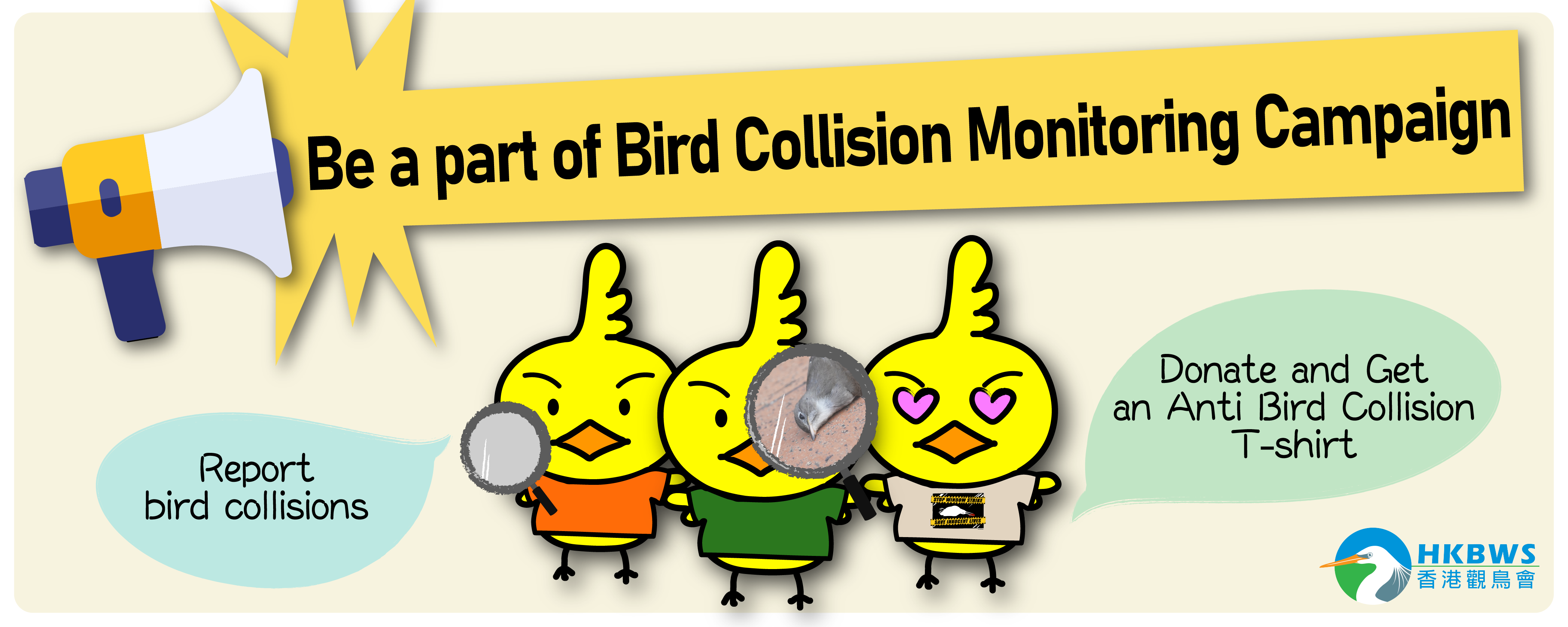The Hong Kong Bird Watching Society (HKBWS) has released its first report on bird-window collisions in Hong Kong. The report consolidates the data collected during the period from 1st September – 31st December 2022 and provides a preliminary analysis.
Bird-window collisions refer to that birds fail to recognise a glass curtain wall or mirror as an obstacle and mistakenly think they can fly into it, thus hitting the building and causing injury or even death. HKBWS Deputy Director, Ms. Ming-chuan Woo said, "Wild birds are facing multiple threats worldwide. Urban development not only causes the ongoing loss in suitable habitats, but also creates death traps that are threatening the survival of birds. Amongst them, bird-window collision is one of the major killers."
A total of 196 individuals, including 179 deaths and 17 injured birds, were recorded in the bird-window collision cases collected in the first four months as summarized in this report. Seven of them are species of conservation concern, such as the globally “Critically Endangered” Yellow-breasted Bunting, and the nationally Class II protected species Northern Boobook. Almost 70% of the 38 recorded bird species are migrant. November is the month with the highest records of bird-window collisions in the four months, probably related to autumn migration. Overall, bird collisions are usually associated with buildings or shopping malls with large glass or mirror facades, transparent noise barriers, transparent glass railings, and village houses with glass doors and windows, etc.
“The reported bird collision victims were distributed across multiple districts in Hong Kong. The number of cases is hinting us that we must not underestimate the potential impacts of bird-window collisions on local biodiversity and threatened species of conservation interest. In order to fully understand the seriousness of bird-window collision in Hong Kong, it is crucial for us to continue to record the situation and further expand our monitoring", said HKBWS Conservation Officer, Ms. Suet-mei Wong.
Through long-term data collection, monitoring and analysis, HKBWS hopes Hong Kong can become a bird-friendly city, reduce unnecessary conflicts between humans and birds, and build an ecologically sustainable and bird-friendly environment for our community.
Unfortunately, the reported cases of bird-window collision received is still far from enough, mainly due to limited public awareness and understanding on the issue. We cordially invite the public to participate in the Bird Collision Monitoring Campaign by reporting bird collision cases.
Data highlights of the report:
- Number of cases and the involved species : 19 families and 38 species were recorded. 7 of them are species of conservation concern. They are the IUCN “Critically Endangered” Yellow-breasted Bunting, the Class II protected species in China - Northern Boobook and Bluethroat, the nationally “Near Threatened” Lanceolated Warbler, and the species of “Local Concern” -Siberian Blue Robin, Pallas’s Grasshopper Warbler and Black Bittern.
- Amongst the 38 recorded species in bird collision cases, 26 species (68%) were migrants, such as Indochinese Yuhina, Asian Brown Flycatcher and Lanceolated Warbler. 6 species (16%) were migrants or residents, including Chinese Bulbul, Chestnut Bulbul and Swinhoe’s White-eye. The remaining 6 species (16%) were residents in Hong Kong, including Spotted Dove, Eurasian Tree Sparrow and Red-whiskered Bulbul.
- 65 and 64 individuals of Pycnonotidae (Bulbuls) and Zosteropidae (White-eyes) were recorded respectively making these two families the top victims among the 19 families.
- Species with the most records were Indochinese Yuhina (migrant), Chinese Bulbul (migrant or resident) and Chestnut Bulbul (migrant or resident).
- Bird-window collisions recorded in 15 of the 18 districts in Hong Kong.Top 5 districts with the highest number of victims were Sha Tin District (43 individuals), Eastern District (37 individuals), Kwun Tong District (22 individuals), Wan Chai District (17 individuals), and Islands District (13 individuals).
| Please click here to view the full report |





